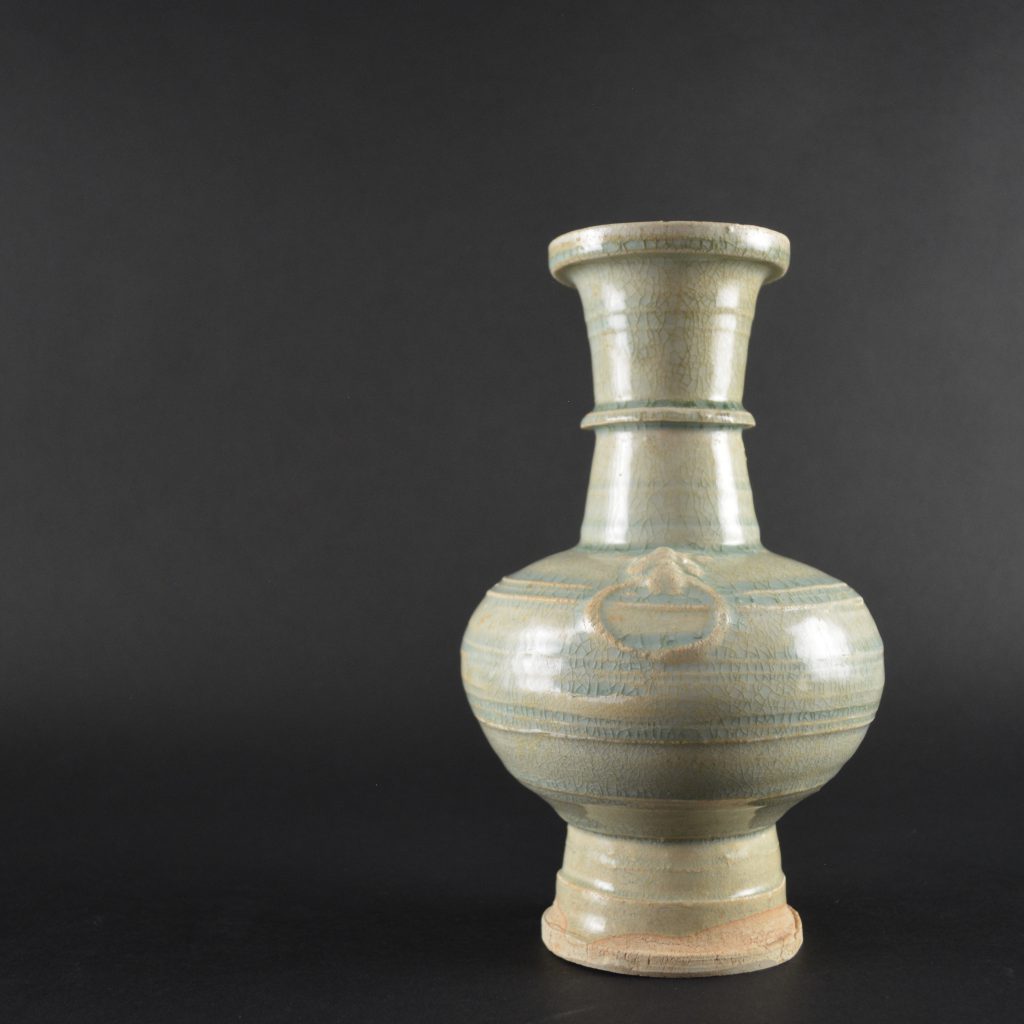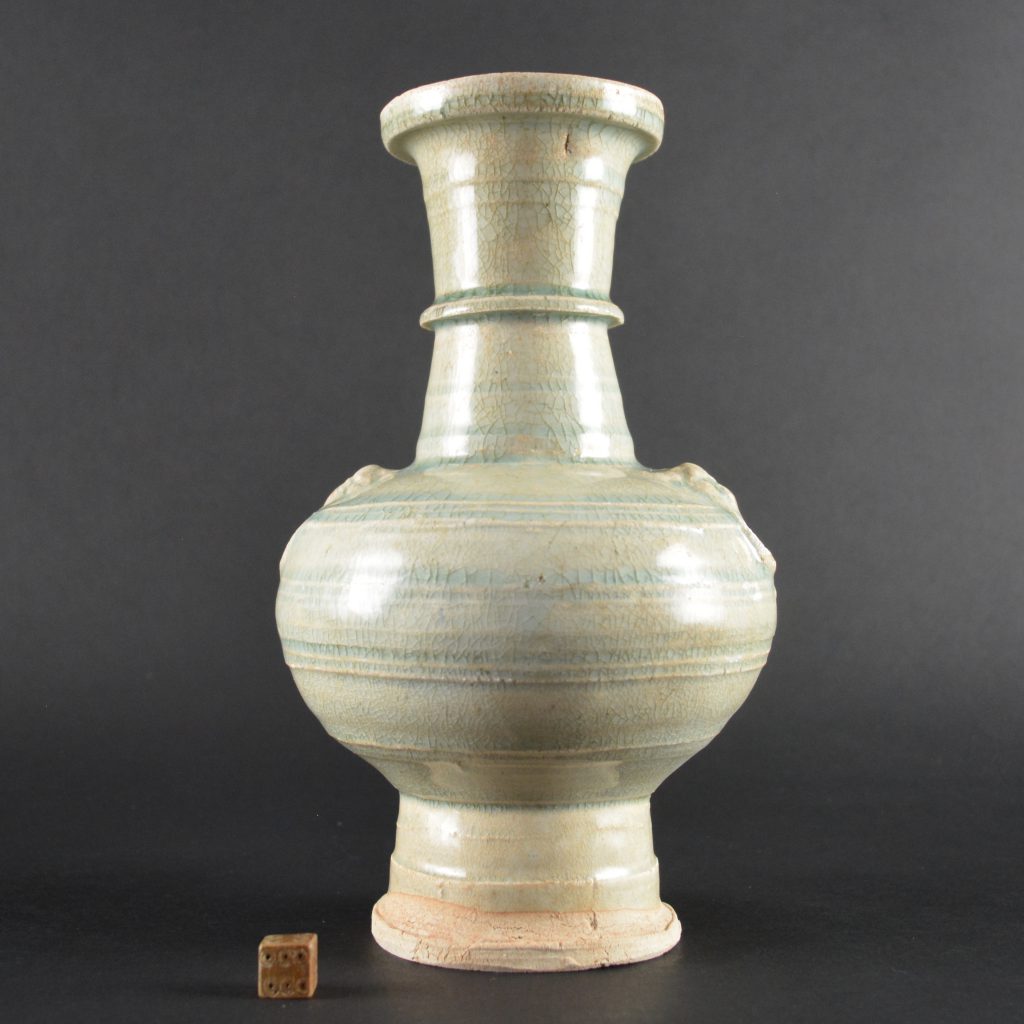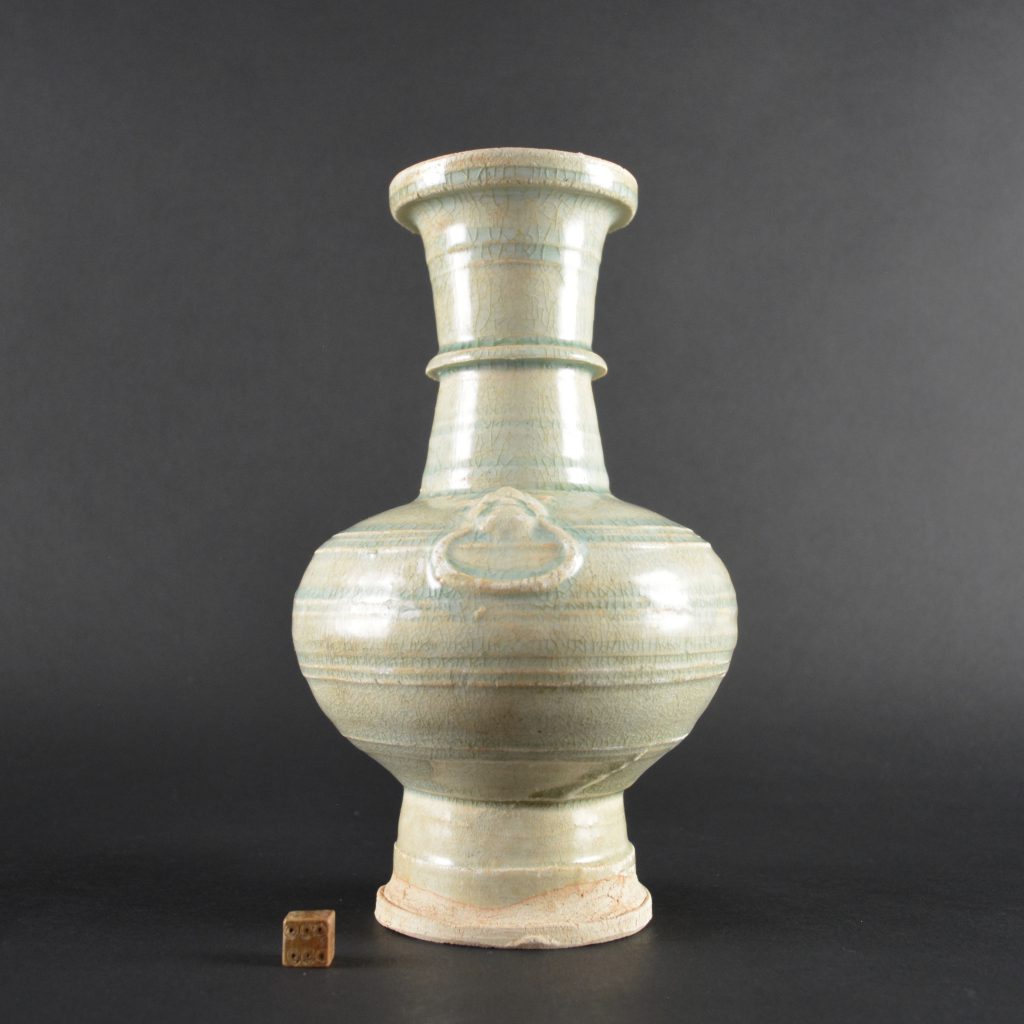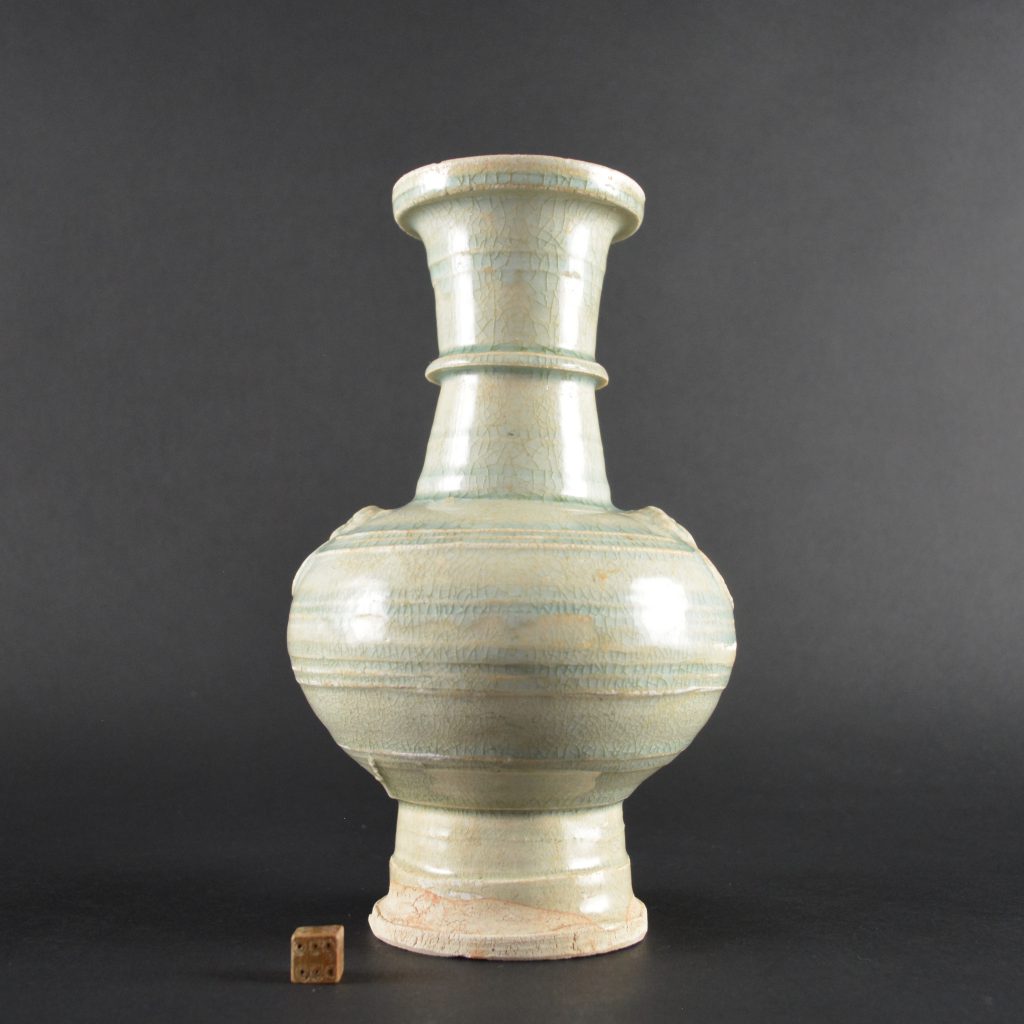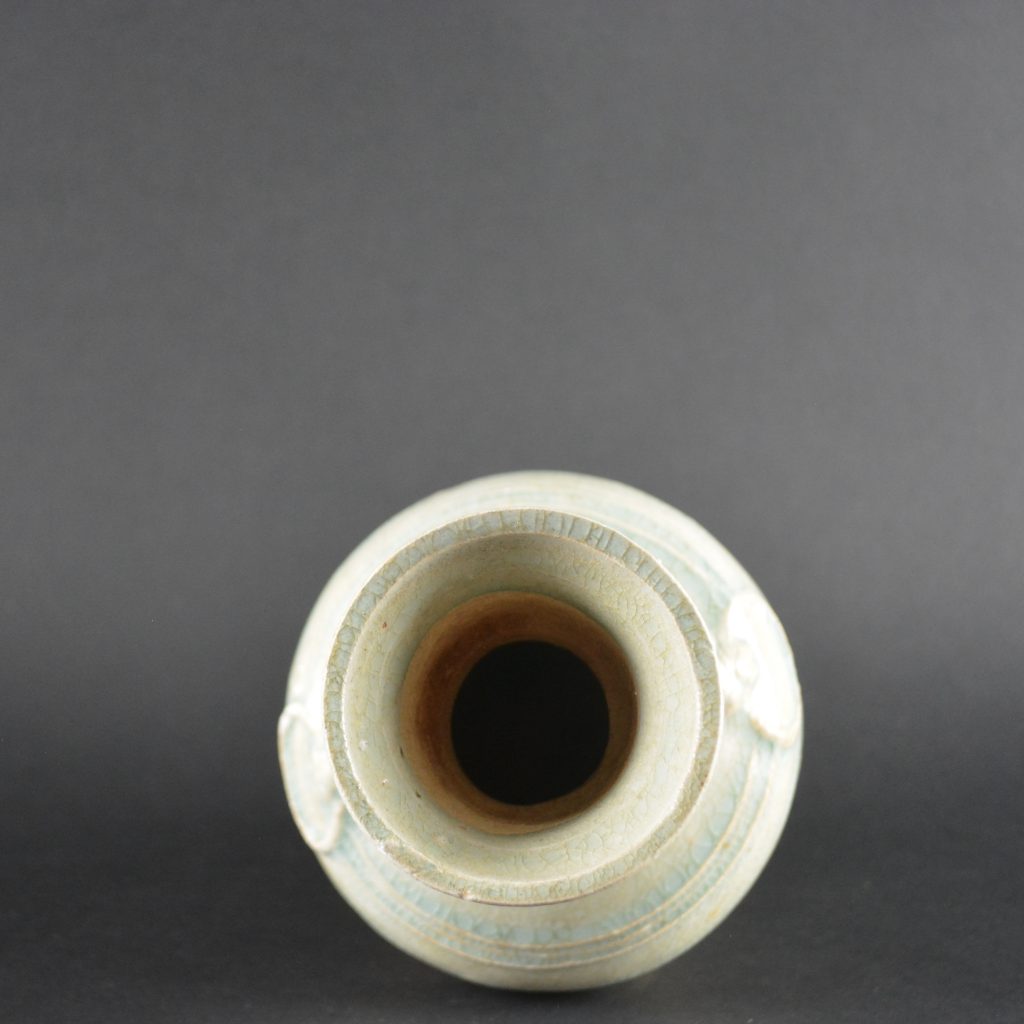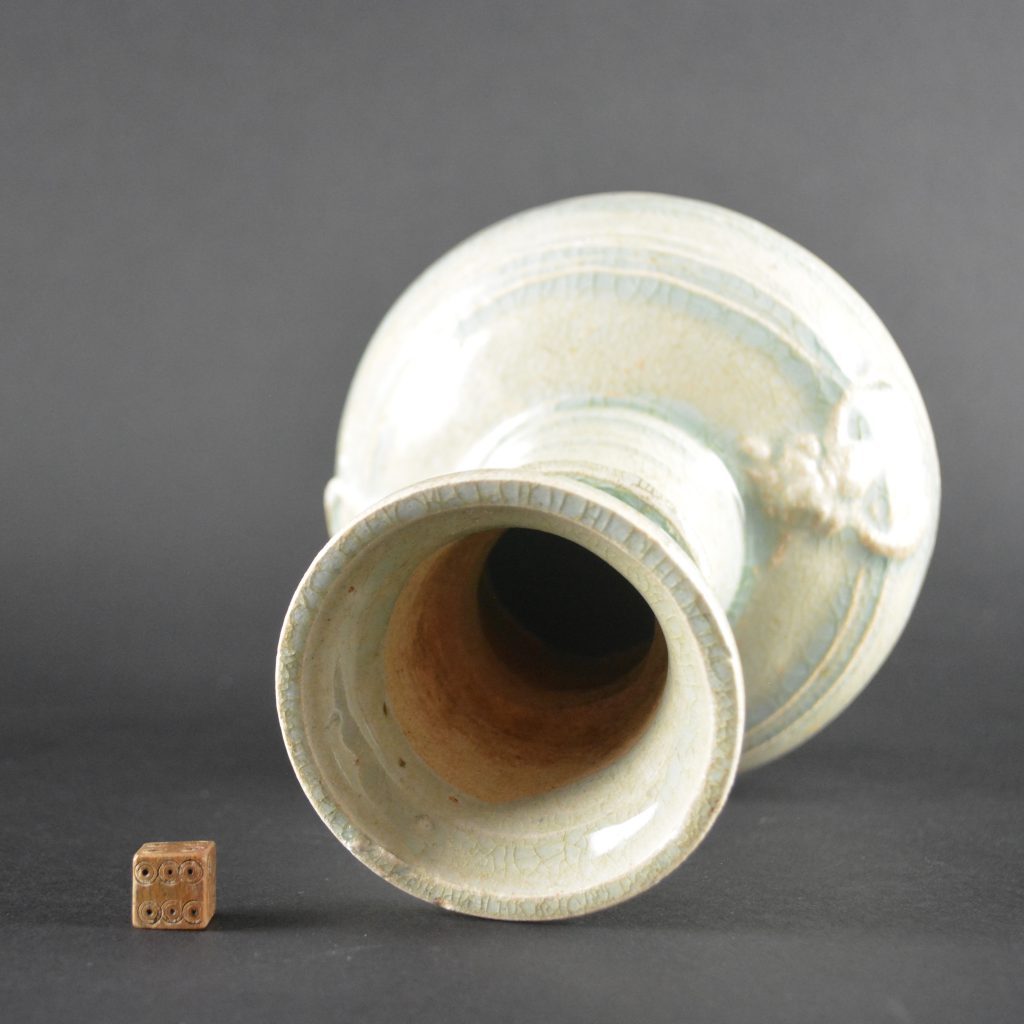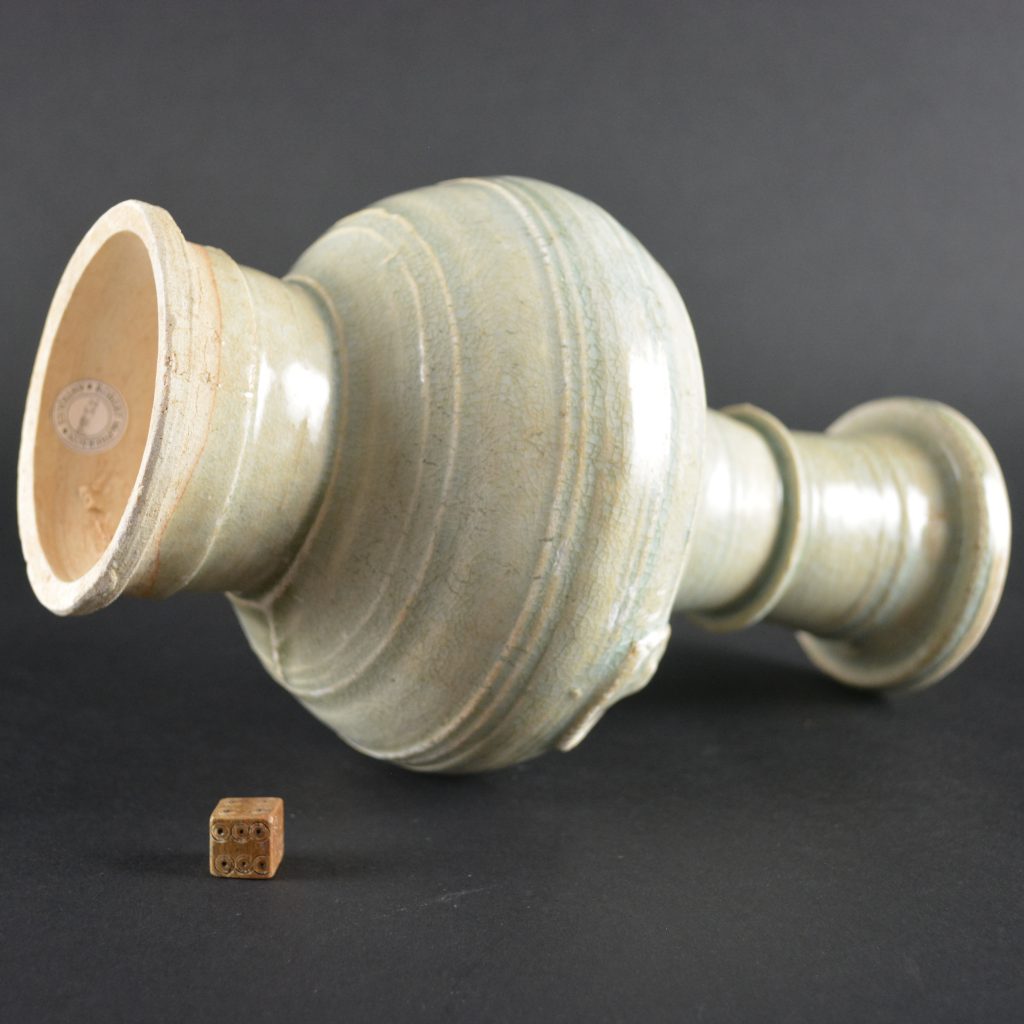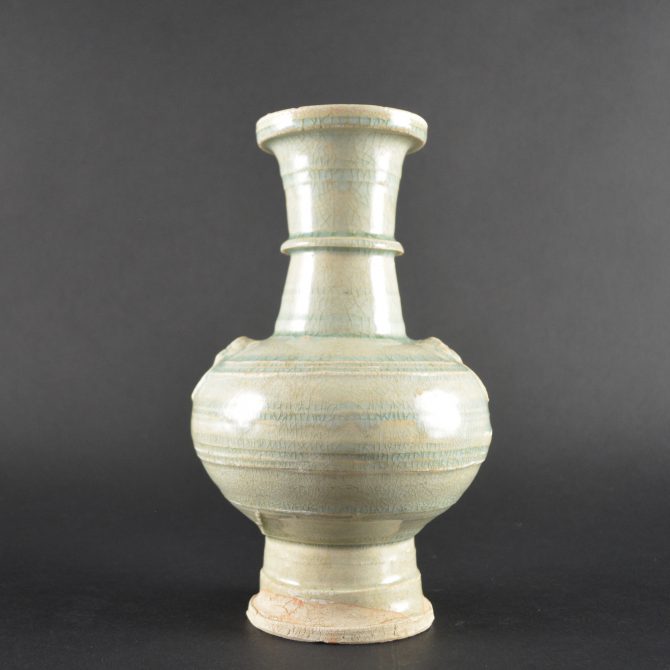
A Yuan Qingbai Porcelain Bronze Form Vase
A Yuan Dynasty (1279 – 1368) Qingbai Porcelain Vase. The form is based on Chinese bronzes of the Yuan period, many of which were used for family alters or scholars desks.
This vase is constructed from a type of low-fired, rather porous clay, it also has a crackled glaze. This appears to be similar to the well know funerary vases and covers with applied decoration. Presumably they were both made in the same kilns or at least in the same area of China, most probably Fujian Province.
SOLD
- Condition
- In excellent condition. The glaze is crazed, minor glaze loss to the relief decoration, probably a firing fault.
- Size
- Height 23 cm (9 inches).
- Provenance
- N/A
- Stock number
- 25388
Information
Qingbai Ware :
The earliest known qingbai wares were produced in Jingdezhen in Jiangxi province around the late 10th century and are characterized by faint pale-blue glazes on low, wide forms. Qingbai continued to be enormously popular and highly produced throughout the Song dynasty (960-1279) and was prevalent in the Yuan dynasty (1279-1368), but slackened during the Ming dynasty (1368-1644) until being replaced by tianbai, ‘sweet white’ ware. The initial forms of qingbai were simple bowls and dishes, but by the mid-Northern Song the forms had advanced to include a wide variety of objects used for daily life such as ewers, boxes, incense burners, granary models, vases, jars, sculptures, cups, cupstands, water droppers, lamps, grave wares, and tools for writing and painting. The precedent for the majority of these forms is found in earlier metalwork and lacquer and Rawson has suggested that the imitation of silver was the primary force behind the production of white wares, including qingbai. See our `History` section for more information about Song Porcelain and Stoneware by Mindy M. McDonald.


